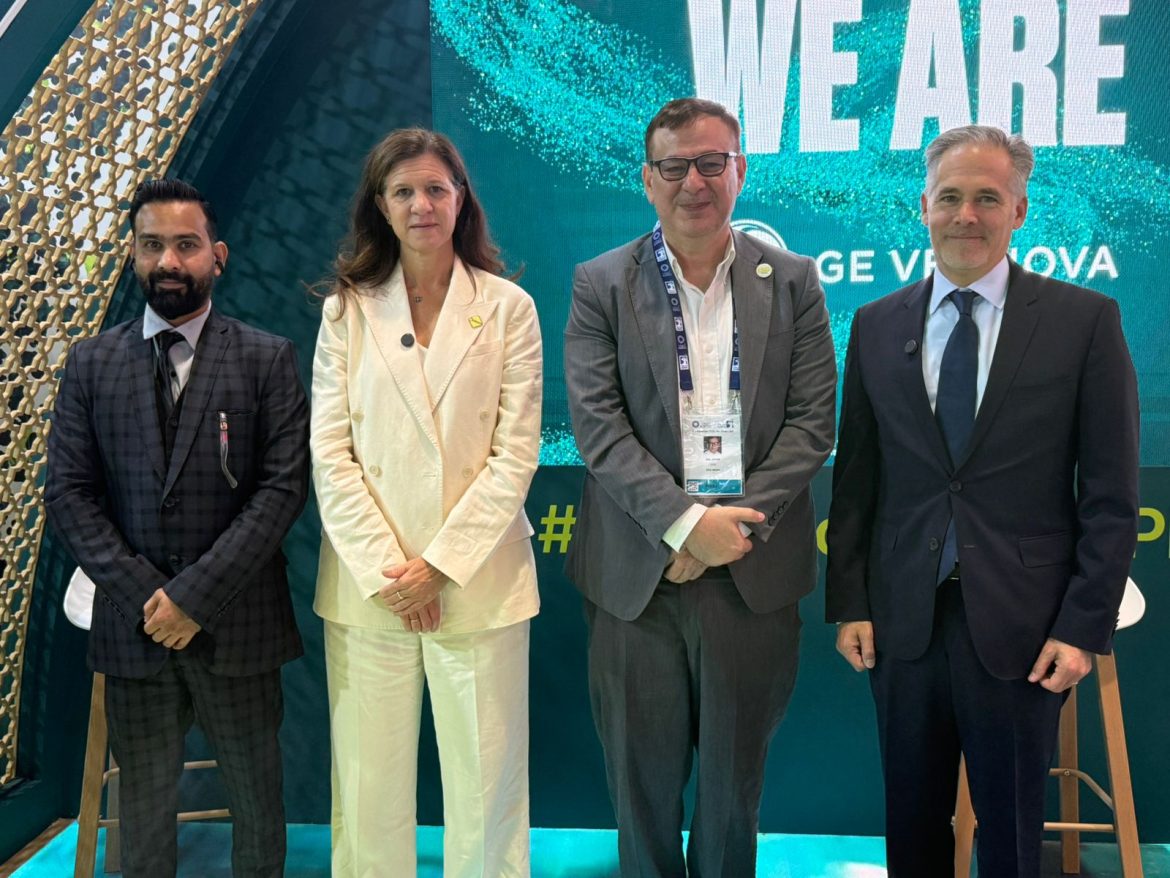As global energy demand rises to unprecedented levels, driven by digitalization, industrial expansion, and the growth of data centers, GE Vernova—spun off from General Electric as an independent energy company—plays a central role in enabling reliable and sustainable power worldwide. In this interview, ESG MENA discussed with Maví Zingoni, CEO of GE Vernova’s Power businesses, and Joseph J. Anis, President and CEO of GE Vernova’s Gas Power business in Europe, the Middle East, and Africa, how the company is addressing the challenges of energy supply, decarbonization, and workforce development across regions.
How would you describe GE Vernova’s position in the energy sector after more than a year as a standalone company?
Maví Zingoni: GE Vernova’s equipment produces around one quarter of the world’s electricity. We cover all major power technologies—gas, nuclear, hydro, steam, and wind—and we also provide grid infrastructure that supports roughly 80% of global networks. This breadth allows us to stay technology-agnostic and focused on delivering all forms of reliable power. Global electricity demand is rising faster than it has in a century, particularly due to data centers that require constant reliability. That’s why we need baseload generation from gas and nuclear alongside flexible renewables. Our priority is delivering affordable, reliable, secure, and sustainable power.
The global discussion has moved from “energy transition” to “energy addition.” What does that mean for GE Vernova?
Maví Zingoni: It means that demand is growing so quickly that all available technologies are needed to meet it. But this doesn’t mean slowing down decarbonization—replacing coal with gas cuts emissions by about two-thirds, and nuclear offers zero-carbon baseload capacity. We invest over a billion dollars annually in R&D to develop new technologies. Projects that were concepts a year ago are now being built, like our combined-cycle gas plant with carbon capture in the UK and our small modular reactor project in Canada. In Iraq, we’re modernizing existing plants to boost efficiency. It’s an ongoing process that combines today’s technologies with those of the future.
The expansion of data centers and AI has created new power demands. How is GE Vernova responding?
Maví Zingoni: It’s not a matter of choosing between new builds and retrofits—we need both. Removing any technology too soon would threaten reliability. Today, it’s not only about keeping the lights on, but also keeping servers on. For new facilities, we focus on integrating gas-based baseload with renewables and storage, supported by strong infrastructure, interconnections, cooling systems, and regulation. The approach has changed—now companies plan power supply before deciding where to locate data centers. AI is also helping us improve planning, timing, and project coordination.
How do you see the current global sentiment toward energy balance reflected in the Middle East?
Maví Zingoni: Around the world, we see a pragmatic shift. The balance between affordability, reliability, and decarbonization differs across regions. About 800 million people still lack access to reliable electricity, so their priority is availability. India still relies on coal for that reason, while in the U.S., gas remains the most viable low-carbon option. Europe is adjusting after realizing that focusing solely on decarbonization can affect competitiveness. In the UAE, there’s a balanced mix of renewables and gas that provides both sustainability and stability. For GE Vernova, our mission—“electrify to thrive”—stays the same. Reliable electricity is the foundation of development, and decarbonization must go hand in hand with economic growth.
Joseph J. Anis: The Middle East has a strong advantage with its resources, investment capacity, and leadership vision. Our portfolio enables us to support this balanced strategy, providing technologies that advance both energy security and sustainability.
Developing local talent is a major priority for the region. What is GE Vernova’s approach to this?
Joseph J. Anis: We have a significant regional presence, including gas turbine manufacturing and service centers in Saudi Arabia, Algeria, and the UAE. We also work closely with universities to promote STEM education and encourage young people to pursue engineering careers. As global power demand doubles, the need for skilled engineers and technicians will be greater than ever. Governments in the UAE and Saudi Arabia recognize that bridging the gap between academic education and industry needs is key to improving employability among young people.
Maví Zingoni: Meeting the world’s energy needs will require cooperation between governments, academia, and the private sector. We need engineers, welders, electricians—every skill level matters. Collaboration is essential to prepare the workforce of the future.
How do you view the pace of green finance and sustainable investment in the energy sector today?
Maví Zingoni: Green finance is not changing direction—it’s accelerating. Projects are growing larger and moving faster. The UAE’s COP28 commitment of over $270 billion reflects the region’s leadership and growing influence in driving sustainability.
What is GE Vernova’s approach to investment in energy projects across the region?
Joseph J. Anis: Our main role is as a technology provider, not an investor. Sometimes we participate in early project development to help bring projects to life, but we usually exit once they become operational. Our focus is on providing advanced technologies that help solve today’s energy challenges while preparing for future needs.




